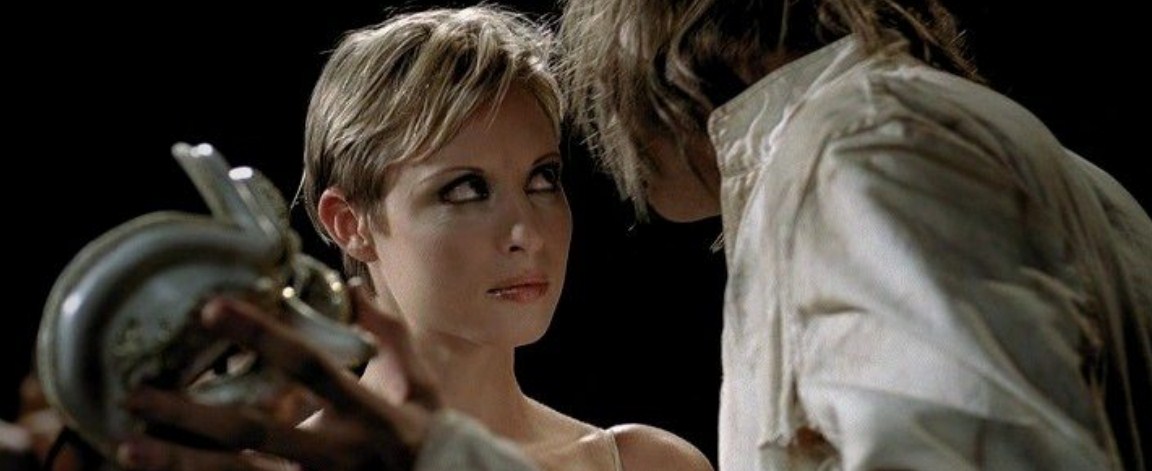Modern Political Philosophy Through Film
2081 is an adaptation, in a short film, the news of Kurt Vonnegut: Harrison Bergeron. This news was published in French under the title “Poor Superman ” and published in various collections of Science Fiction. The film is available for sale on amazon.com a few months. A website is dedicated to it. Edward Cline is an American novelist, author of many articles published in the magazine Capitalism. In this review, he presents 2081 as a theory of justice of Rawls images. An illustration of the nightmare of egalitarianism.
2081: philosophy in motion
I recently watched a gem of a cinematic parable, 2081, a Rawlsian dystopia that describes a society where “everyone is equal.”
I wonder how many readers remember the theory of justice of John Rawls, this scientist hymn to egalitarianism and institutionalized jealousy written in 1971. How can we put in scene, images and sounds, its pretension, its perverse principles?
The film, made under the aegis of the Moving Picture Institute, produced by Thor Halvorssen and written and staged by Chandler Tuttle, is inspired by a story of Kurt Vonnegut, Harrison Bergeron. As any parable, 2081 should not be taken at the foot of the letter.
In 2081, exceptionally talented individuals, beautiful, strong, and smart are ‘made equal” with their fellow moderately endowed through a series of objects disabling – weight, masks, and Taser devices that interrupt the thought and restrict the movement. Anyone tested by State and considered above average in any field is obliged by law to be equipped with one or more of these shackles, qualified “equalizers.” Remove them can lead to jail.
The son of George Bergeron, Harrison was arrested and imprisoned for six years for refusing to wear the “equalizer” and for having ostensibly “removed in public.” He escaped from the prison and appeared in a concert hall where the beautiful ballet sleeping beauty by Tchaikovsky is interpreted. The ballet is broadcast on national television. Ballerinas are also hampered by weights that make their clumsy movements. Harrison announced to the audience that he had placed a bomb under the room. He says, among other things, that it is “an exception to the standard,” and that he “was not created equal,” and carries all the features his body supports, including a yoke installed on his shoulders and neck.
It is his profession of freedom. He’s crazy… or perfectly lucid. He is unwilling to continue to live in a world of ‘equity’ and “original positions” [this last concept was forged by John Rawls]. It is to the audience to judge. He then invited a volunteer to do the same. One of the ballerinas comes forward and rejects its weight also.
At the same time, the handicapper general of the United States response teams surround the room, disable the bomb (it is unclear if it was a real bomb, I do not, but it’s just mere speculation), and are preparing to capture or kill the “public threat.” The authorities have ordered to stop broadcasting television, but Harrison Bergeron has a device that replaces the end signal and rebroadcast the program (reminiscences of the diffusion of John Galt in Atlas Shrugged of Ayn Rand). While Harrison Bergeron and the Ballerina interpret with total freedom of movement a melancholic composition to an amazed audience (of which many members are also “EQs”), the response teams move in the room itself.
A woman without expression, silent, who is in charge of the operation, takes a gun and kills Harrison Bergeron and the ballerina. The action is televised without his knowledge, and one of the last things that we see is his slightly surprised face, with eyes in the field of the camera. It’s what Harrison wanted the country to see – the expressionless face of evil. End of the broadcast. Public enemy has been eliminated. Move along, nothing to see.
Get to know the basics principles of Libertarianism with our Libertarianism Philosophy for Dummies Guide
George (also hampered by “EQs”), has seen it all in the comfort of her living room, while his wife “compliant”, Hazel, interpreted convincingly by Julie Hagerty (has no “equalizer”, because there is nothing fancy or) exceptional home), is blind to the events on the television screen. She washes the dishes, his back to the screen, and misses the entire issue, and the last image of his son, the sound of running water as “auditory equalizer” for her.
When George begins to think about the arrest of his son at home years ago, and begins to react to the delivery and the heroism of his son, his memory is disturbed by his hearing aid. His wife asks him why he looks so upset. He can only answer that he saw something “sad.” He cannot remember anything. He forgets what he saw in front of his television, because of machines that hinder it.
The movie is only 25 minutes, but it puts a strong slap that the 1984 Michael Radford, which lasts nearly two hours. The achievement is as good as that of a blockbuster for $ 20 million. This parable about the price of silence and the fate of those who prefer the security and passivity to independence and freedom is one of the best movies I’ve ever seen.
2081 is the theory of John Rawls justice in images. This is the Rawlsian moving philosophy.
